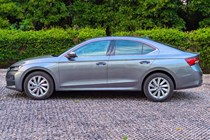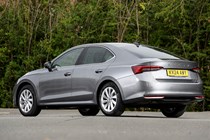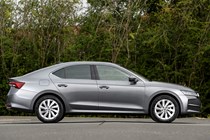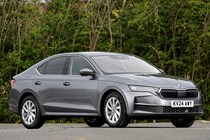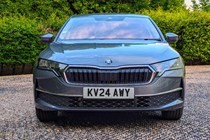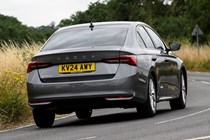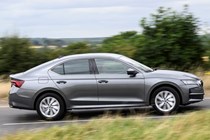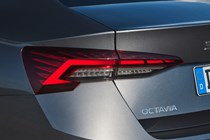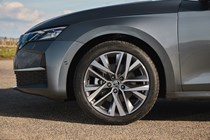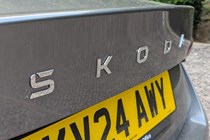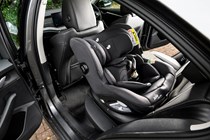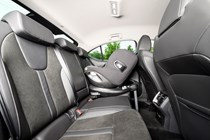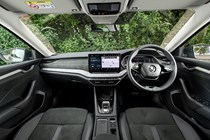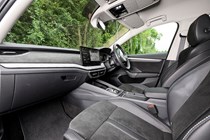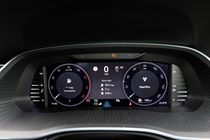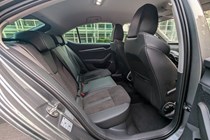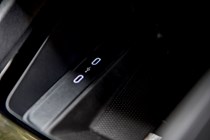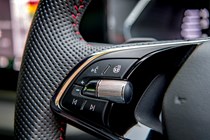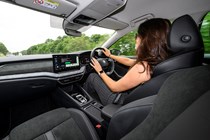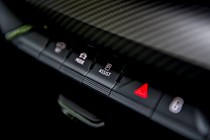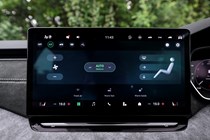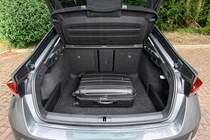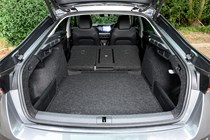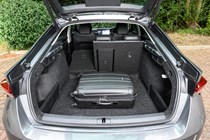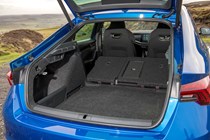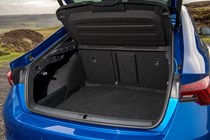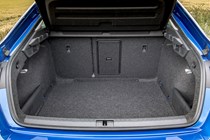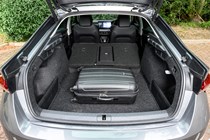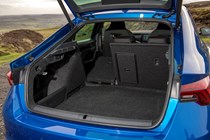
Skoda Octavia long-term test
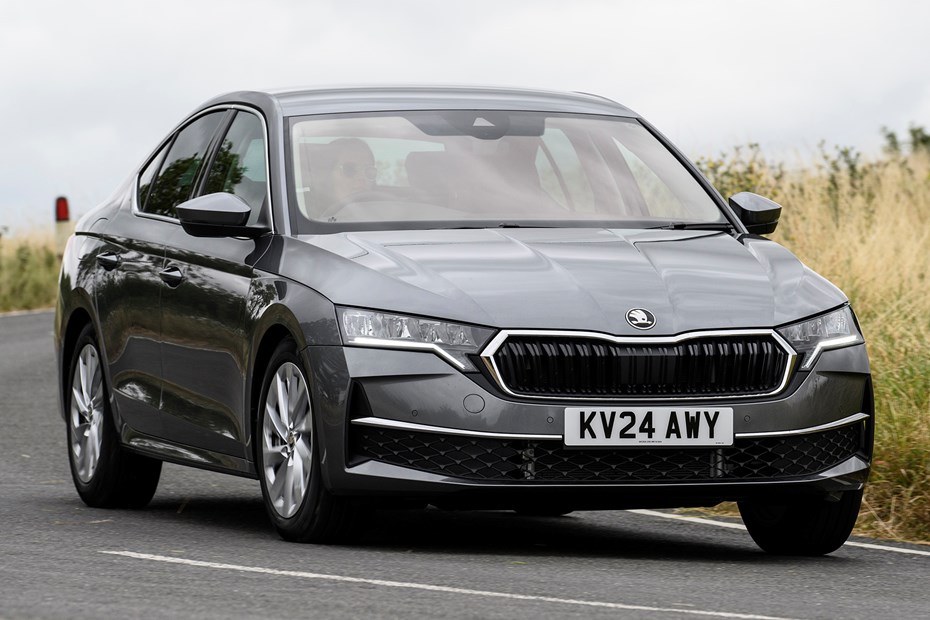
What is the lower-powered, super-economical Octavia 2.0TDI like to live with over a longer period? Does diesel still stack up in the age of longer-range electric vehicles, tax-efficient plug-in hybrids and super-economical petrols? We found out by running a pre-facelift example for six months.
Reports by Steve ‘Percy’ Lawman and Keith Adams.
Jump to:
- Cabin and controls
- Engines and first impressions
- Long-distance running
- Impressions after 5,000 miles
- Diesel vs hybrid
- Verdict
Update 1: Welcome
Introducing the Skoda Octavia TDI SE L First Edition
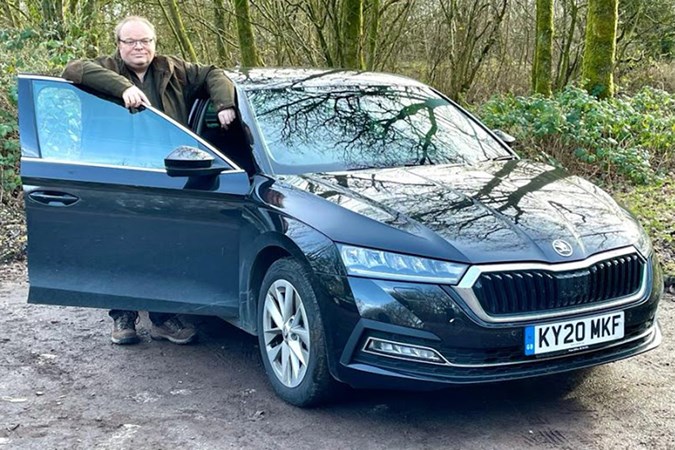
Well, this year has been far from ‘normal’ and my new long-termer has just arrived after the first Coronavirus (COVID-19) lockdown was lifted. The delivery driver dropped the car off directly to my house and while giving everything the customary wipe down with industrial strength alcohol, commented how much he liked it and how frugal it was. That’s always a good vote of confidence as the delivery drivers get to cover many thousands of miles each year in a multitude of different vehicles.
Skoda’s current Octavia is a brand new model year from 2020 onwards, replacing the previous 2013-2020 generation car and comes in both hatchback and estate bodystyles. Pitched right into the mix of cars like the Volkswagen Golf, Ford Focus and SEAT Leon, the Octavia needs to excel if it’s to stand its corner with this kind of heavyweight opposition. The Octavia has always been one of our all-time family favourites. It consistently scores well in all areas and from what we’ve seen so far, this one isn’t going to disappoint.
The Octavia comes with four different trim levels. At the base is the SE First Edition, followed by the SE Technology, penultimately the SE L and then finally the range-topping SE L First Edition. Three petrol engines are on offer with the 110hp 1.0TSI and the 1.5TSI with 150hp. A third variant (the 1.0TSI e-Tec) is a mild hybrid. The mild hybrid is a brand-new power unit equipped with a seven-speed DSG gearbox. It’s available in two trim levels and at the heart of the e-Tec powertrain is a powerful 48-volt Li-ion battery and a combined belt-driven starter-alternator.
Coupled with the three petrol variants, a single 2.0TDI diesel is available which comes in both 116 and 150hp flavours. A higher power 245hp vRS plug-in hybrid is also available, and this is Skoda’s first performance plug-in.
Our Octavia is the top-end SE L First Edition with the 116hp diesel power unit fitted. While we’d say the 150hp diesel is probably the choice for larger families, you can’t dismiss the lower-power unit as it genuinely has plenty of usable low-down torque. Both petrol and diesel engines are available with either manual or auto DSG transmission. Saying that, not every engine/trim-level variant offers the choice of both.
The new Octavia looks to be extremely frugal. We’ll be putting this theory into a full-blown evaluation. Saying that, and even after a few weeks of ownership, my own initial fuel consumption figures look to be in excess of the official WLTP figure of 55.4–65.7mpg and by a healthy margin. It certainly bodes well for the up and coming months so stay tuned for further updates.
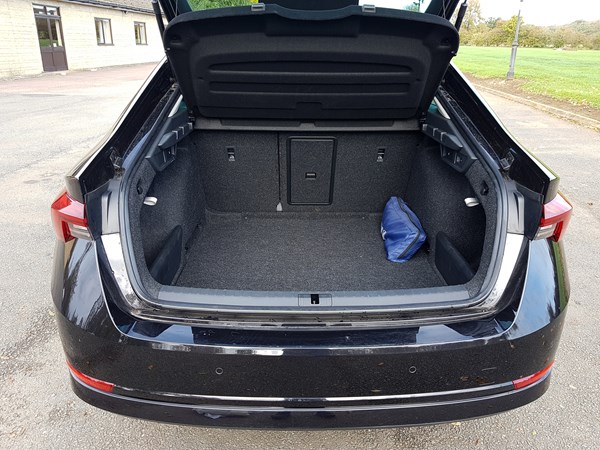
Where the Octavia excels is equipment and it is brimming with plenty of new tech. On all SE L models, the standard equipment list is pretty impressive. 17-inch alloys, heated front seats, keyless entry, LED headlights and a 10.25-inch virtual cockpit are just a few key items that the new owner can indulge in. The full list is superbly impressive but we’ll drill down in future updates to see what’s on offer, and of course, all those optional extras that make your car just that little bit more special and individual to you.
Skoda has a very slick and easy to use website where you can explore the different trim levels and build your own bespoke car.
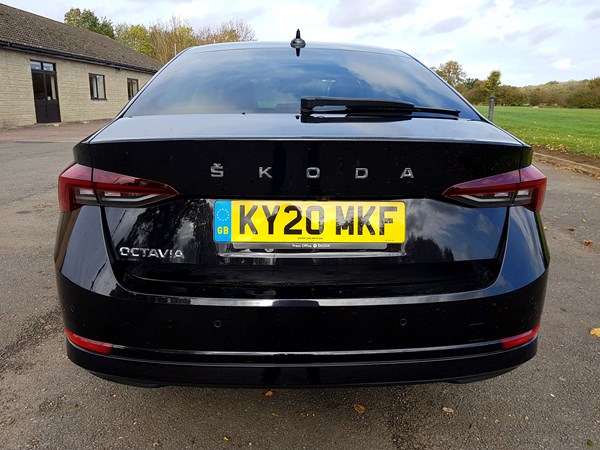
This is Skoda’s fourth generation of the Octavia and this evolution now reveals a car that has heaps of new cutting-edge tech, a huge cabin interior and a cavernous boot big enough to put the contents of a good-sized supermarket in. On the face of it, the new Octavia is practicality done the right way.
The interior has had a good update from the previous generation with a plusher cosier interior. The cabin can easily accommodate the tallest of occupants. I’m a ‘normal six-footer’ and it has oodles of extra space when sitting in either the front or the rear of the cabin.
Over the coming months, I’ll get deep under the skin of the Octavia and hopefully if at some point the Covid-19 issue subsides, I’ll be looking forward to getting out and about – stretching the Octavia’s legs on longer load-lugging journeys which will be very suited to the fundamentals of this car.
Update 2: Cabin, equipment and options
What’s the Octavia like to spend time in?
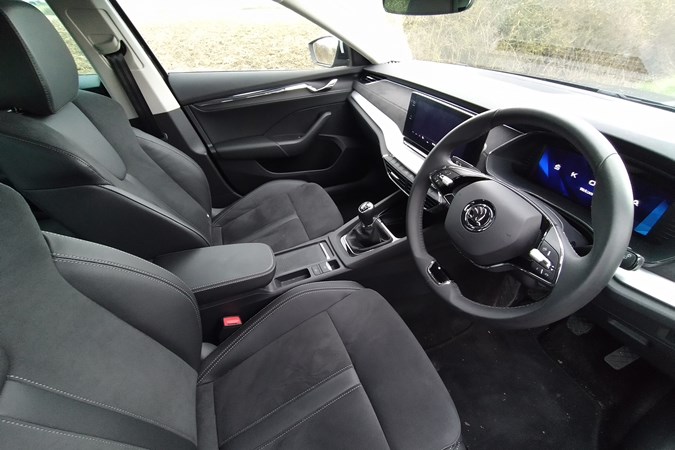
Inside, our Octavia competes well with rivals such as the Volkswagen Golf and in our opinion is well ahead of the Ford Focus in terms of quality of the fixtures and fittings.
Standard equipment on the Octavia is extremely generous and even the basic entry-level trim SE First Edition comes with cruise control, rear parking sensors, 16-inch ‘Velorum’ alloy wheels, a multi-function steering wheel and climate control to name but a small handful of the many desirable assets. LED headlamps with LED daytime running lamps also come as standard across the whole range as do an auto-dimming rear-view mirror.
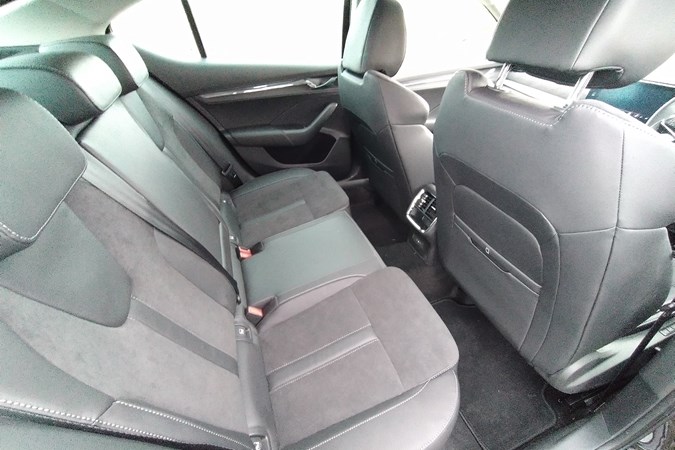
Inside, the cabin is smart and everything seems to be solidly assembled. It’s a cosy and very roomy place to be. There would certainly be no issues in seating five adults of six-foot and above in the Octavia and in comfort with room to spare.
Sitting in the driver’s seat you appreciate just how much acreage there is. Forward visibility is excellent which you’ll appreciate when pulling out from a junction. It’s handy having the rear parking sensors and camera, as the car is quite long. I did notice, that rear also seems to sit quite high when viewing through the rear-view mirrors.
In some circumstances you can lose sight of the rear end and then begin to doubt yourself on how far you can go. Here, the parking sensors add that extra required degree of insurance when reversing and they are great piece standard fit kit, and in my view, essential on large or longer length cars.
Rather than just mention a selected handful of equipment that owners can expect, I’ve dissected Skoda UK’s website so you can get a rundown on what is fitted as standard equipment across the range, and on top – what is fitted as additional standard equipment to the SE L First Edition car.
Skoda Octavia equipment on all trim levels
Exterior
- Electrically adjustable and heated door mirrors in body colour
- Alloys wheels
- LED front fog lights
- LED headlights with LED daytime running lights
- LED rear lights (low functionality)
- Rear fog lamp (one side only)
Interior
- Front centre armrest
- Climatronic dual-zone air conditioning
- Luggage compartment lighting
- Electronic parking brake
- Electric windows front and rear
- Unsplit rear bench seat, split folding backrest
- Wooden multifunction steering wheel for Tiptronic
Safety and Driver Assistance
- 12-volt socket in luggage boot
- Three-point seat belts in front and rear
- Alarm with interior monitoring, tilt sensor and back up horn
- Tyre repair kit and tyre pressure monitoring
- ISOFIX on front passenger seat and outer rear seats
- Rear disk brakes and wheel bolts with anti-theft protection (unlockable)
- Driver knee airbag
- Hill start assist
- Child lock in rear doors (manual)
- Three rear head restraints
- Light and rain sensor
- Curtain airbags and front side airbags
- Skoda Connect eCall and 1-year Care Connect Remote Services
Radio, Telephone and Navigation
- 8 Speakers
- DAB digital radio with Bluetooth
- 2 x USB Type C ports (for charging and data transfer)
- Wireless SmartLink for Apple Car Play only (wired for Android Auto and Mirrorlink)
- Bluetooth
What equipment our car comes with
Exterior
- 17-inch Rotare alloy wheels
- Chrome window surrounds
- Blind spot detection
- Power folding, heated and electrically adjustable exterior mirrors with memory feature
Interior
- Heated front seats
- Microsuede padded dash panel and upholstery
- Privacy glass
- Silver squares haptic decorative inserts
- Electrically adjustable driver’s seat with memory
- Electrically adjustable lumbar support for driver’s seat
Safety and Driver Assistance
- Front and rear parking sensors with manoeuvre assist
- Voice control
- Adaptive cruise control
- Keyless entry with stop/start including rear doors
- Drive mode selection
- Headlight washers
Navigation Screen
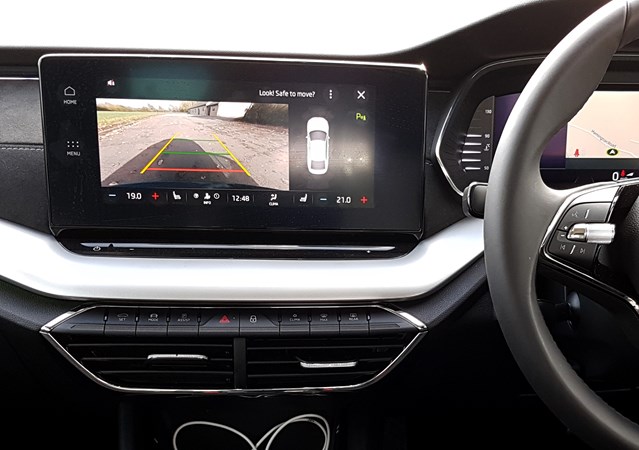
Here we can see where Skoda has really upped its game. The entry trim level models include an 8.25-inch screen which has Bluetooth. The SE Technology, SE L and SE L First Edition cars feature a 10.25-inch display screen with built-in 3D navigation. It’s very clear, sharp and easy to get your head round. Apart from being the central point of operating the sat-nav, climate control and audio, it also serves very well in displaying the rear-view camera. A true ‘multi-function‘ screen.
The capacitive touch-screen display is rapid with minimal lag featuring nice, large icons and it’s very responsive. There are lots of different menu options, but most are logical and the touchscreen seems to control almost everything from audio to the climate control. The cabin actually looks really quite minimalistic with the lack of buttons and switches. Don’t look for an analogue volume button anywhere – you won’t find one, it’s all on-screen digital only.
Nearly all the functionality is centred around the touchscreen display and is digitally controlled. If you are happy in this type of environment, you’ll get to grips with it quite easily, although some of the menus can be a bit fiddly to find whilst driving – so it’s best to pull over. For others, a small learning curve is in order just to get to up to speed with what all the different menu options offer.

Options
As with most manufacturers, Skoda hopes to whet your appetite and entice you with some additional goodies. Options vary quite widely across trim levels, but here’s what our car has fitted over and above the standard equipment. We’ll let you know if they were worth shelling out for.
- Metallic paint – £575
- Rear window wiper – FOC
- Rear view parking camera – £595
- Steel spacing saving spare wheel – £180
- Removable lockable towbar with adaptor – £955
- Total cost of car including factory fitted options: £28,383
Update 3: Engines and first driving impressions
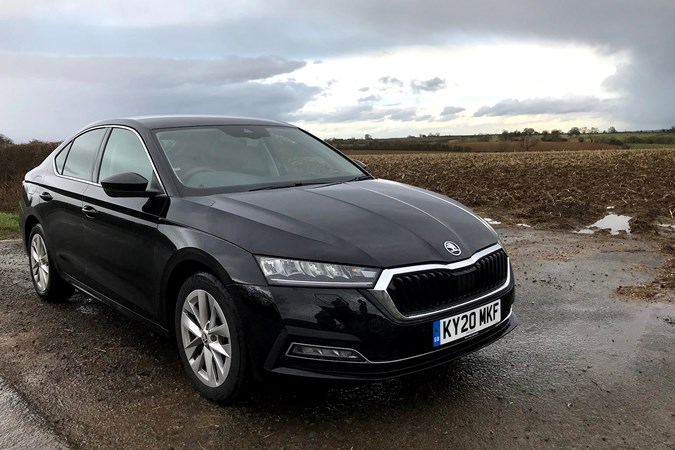
Skoda’s family car gives the owner a great choice of modern powerplants. The mainstay engines are the 1.0 and 1.5TSI units and the trusty 2.0TDI diesel, but as you can see below – there’s some new additions for 2020 bringing a mild-hybrid and plug-in hybrid to the party. There’s also the vRS model which churns out 245hp from the 1.4TSI plug-in hybrid power plant and coupled with 400nm of torque, promises to be a real rocket-ship. In addition, you can also have the 245hp 2.0TSI manual and DSG options as well, so a great all-round choice.
Check out the Skoda Octavia 2020- specs page on Parkers for the availability for each different trim level – especially worth bearing in mind as not all engines are available for every trim. Click here to see an overview of the power units – courtesy of Skoda.
Note the very close figures for the 2.0TDI 116hp and 150hp unit. The CO2 figures are actually the same and fuel consumption is within 0.6mpg. This makes the 150ps diesel look very appealing. However, our own car carries the 116hp diesel unit and we’re expecting big things from it.
What’s it like to drive?
Out and about in our test car we find the six-speed manual gearbox a precise experience. There’s plenty of pulling power from the lower powered diesel and it never failed to deliver a good amount of low-down grunt making brisk progress from a standing start. Although not yet tested, on paper the 150hp diesel looks like it could well be a really popular choice, especially as the unit has the same CO2 figures as the 116hp powerplant. The higher power engine delivers what looks to be a swift experience reaching 62mph in only 8.7 seconds.
Out on the open road is where the Octavia feels at its best and really at home. It’s a large car and makes for a great modern mile muncher. On the motorway, the Octavia will happily gobble up mile after mile with ease. I am hoping to get a real long distance jaunt under my belt and put the Octavia through its paces in its natural environment.
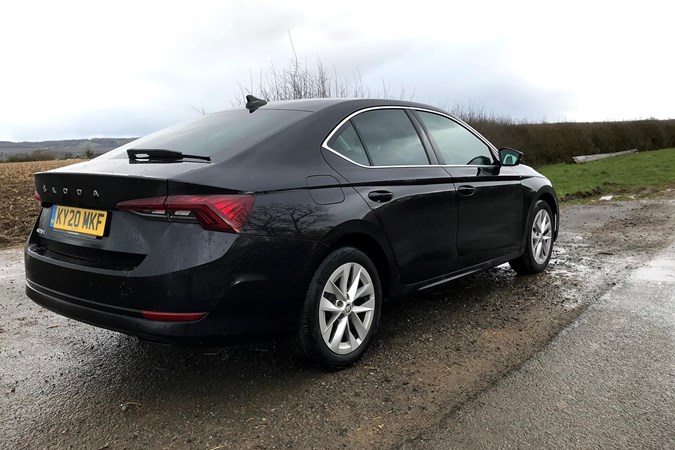
Riding on the backroads or undulating minor roads is where the Octavia feels a little out of its depth. It’s big and you need to gently remind yourself of that fact but the steering is precise and never gives any worries.
Large potholes can cause a moment of caution but the car rapidly recovers its posture. Driving quickly into bends can cause a certain amount of body roll which is to be expected as the suspension is generally quite soft, but there is however an optional adaptive suspension package that will certainly help as the user could then dial in a specific setting for every occasion.
Our experience in driving the new Octavia so far has been very positive. It makes an excellent large family car and will transport a hefty gaggle of bodies plus a mega boot full of luggage with ease over many miles. Stay with us for future updates as we begin to ramp up the miles.
Update 4: Long-distance running
Parkers editor Keith Adams takes over running the Skoda Octavia 2.0 TDI…

Thanks for running in the Octavia, Percy! I must admit that when I handed back the keys to my much-missed BMW 320d Touring early in 2020, I thought it may well be the last diesel-engined car I’d ever end up running on Parkers. After all, we’re seeing fewer and fewer new diesel cars being launched and UK sales being marginalised, as people move away from them.
But are they right to? My take on all of this – and it’s the advice I give anyone who asks – is buy what best suits your lifestyle. Obviously if you live in the middle of a city and only do short journeys, then of course, an EV is probably best for you. If you live in a city and do the odd long journey, then by all means take a plug-in hybrid.
Petrol cars are getting more economical all the time, and some would say that they are closing the gap to diesel on that score. A 190hp petrol Volkswagen Arteon I recently had for a couple of weeks averaged 45mpg over about 800 miles of driving. I’d say that’s pretty impressive really. So where does that leave diesel?
Well as I found driving the 320d (sparingly and only on essential journeys) during the 2020 lockdowns, the fuel economy ramps up even more. Significantly so. On a couple of longer runs, it managed more than 60mpg driven gently, which all of a sudden means you have a 600-mile range. Turning to the Octavia, I was expecting great things. Back in 2020, I bagged a Volkswagen Golf 2.0TDI for a week and managed to average 67.3mpg, and as the Octavia is powered by the same super-efficient engine, it would be reasonable to expect similar.
Matching the claimed mpg… in the real world
At my first fill-up, the DTE (Distance To Empty) display predicted a fuel range of 560 miles. Ho hum. But as I travelled on the motorway, that figure resolutely refused to drop, and neither did the segments extinguish from the car’s digital fuel display. By the time I’d done my first 250 miles, it was still predicting 450 miles were left in it. Long story short, this car will easily beat 600 miles on a tank – and it costs around £55 to fill up when there’s 75-miles of range left in it.
On the first set of long-distance runs, I have found that the Octavia lags ever so slightly behind the Golf. We’re talking fractions here, and it could well be down to weather, traffic or even the amount of stuff I’m carrying in the boot, but so far I’ve managed a best of 65.2mpg.
Let me tell you, that is not a shabby result at all – as the resident ‘Larry Leadfoot’ of the Parkers team, I don’t tend to go in for hypermiling, so this mpg figure has been achieved by driving normally, not holding anyone up, and certainly not by pootling.

Fuel consumption doesn’t disappoint
Percy did a great job of maintaining an impressive average of 63.5mpg in local running for the first 2,500 miles of this car’s life – a figure that I am, so far, maintaining. The 2.0TDI engine (below) really works well and is doing a smashing job of being both economical and fleet of foot.
Although Skoda doesn’t talk about the need to run-in these cars anymore, the engine will get more economical as it loosens off beyond 10,000 miles, and with that will come even better fuel consumption. But for now, I have to say that the fuel economy (above) has not disappointed at all as it stands. It will, of course, be interesting to see how that develops.
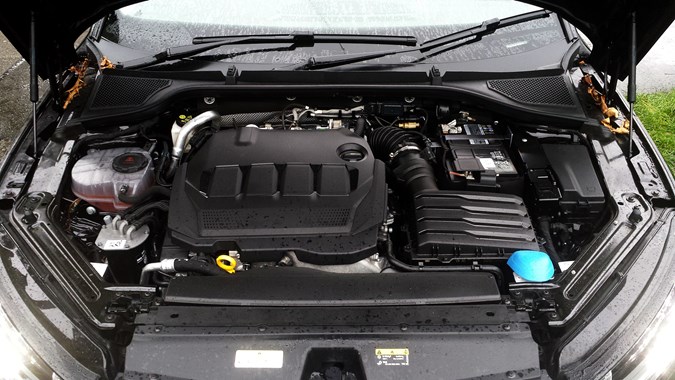
Update 5: Thoughts at 5,000 miles
The miles are piling on and all is well…
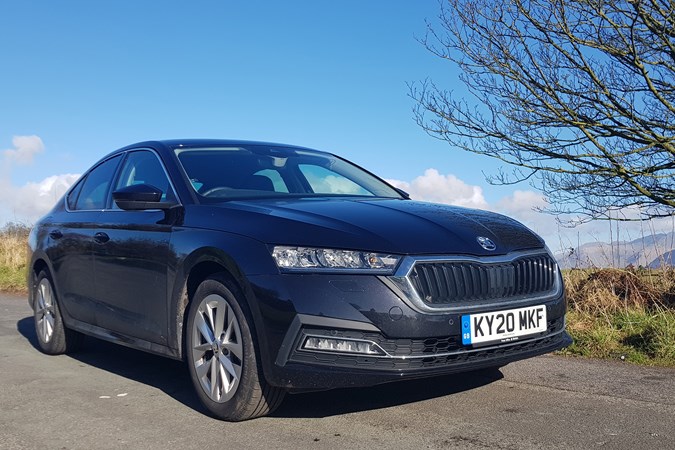
Having set-up a support bubble with my partner, who lives rather a long way away, maintaining it can be a bit of a strain. But on the positive side, it does mean that I’m ramping up the miles in the Skoda Octavia TDI, and really learning what’s good and bad about it. As I’ve already reported above, it’s been delivering some frankly impressive mpg figures – so much so that 70mpg plus has been on the cards a few times. As you’ll see from the table at the bottom of the page, it’s breezing along at more than 60mpg on average, and I can quite happily live with that.
But there’s no point in having excellent fuel consumption if you can’t relax while the car stretches its legs. The good news is that on a long motorway trip, the Octavia is really refined. Road noise is probably 5% louder than the equivalent Volkswagen Golf, but in return, you get a smoother ride, low levels of wind noise, and supportive and comfortable seats. It’s always felt like any Octavia you get into is up for taking you from one end of the country to the other without breaking a sweat, and this one is no exception.
As well as its comfort and low noise levels, I like the way the controls work. The large touchscreen (above) is easy to use and so far seems reliable in use, while the thumbwheels and buttons on the steering wheel are simplicity itself to use. The only downsides I’ve found so far are the long touch-sensitive volume control, which is just where you want to rest your hand when using the touchscreen, and the low-mounted central face vents, which do a great job of cooling your hands and knees, but less so your face. It’s not getting any better with familiarity.
What else do we rate?
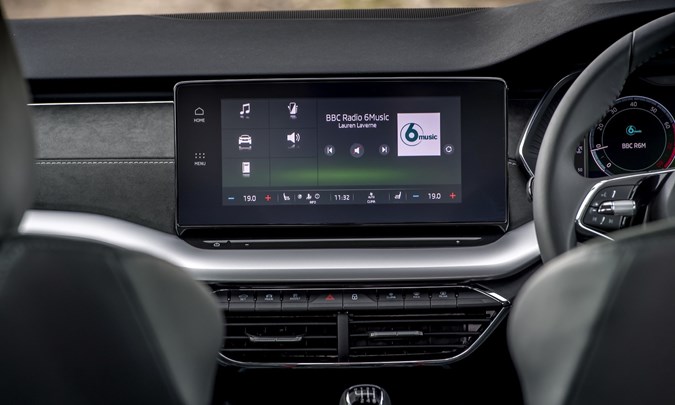
I have to say that this car is proving very easy to live with. This is as you’d expect for a franchise that’s been around since the 1990s and which leans so heavily on the Volkswagen Golf for its technology and running gear. One area where the Octavia is really impressing me is its infotainment set-up (above). It’s a 10.25-inch set-up that we’ve already delved into in our second update above, but what impresses me is not its list of features, but how quick and simple it is to use.
Yes, it has the weird sat-nav homepage that displays nothing but a blank page and a set of coordinates, but that foible aside, I really like its simplicity and functionality. Hooking up to Apple CarPlay and Android Auto is simple enough, but as this is a wireless set-up what you find is that after you’ve done it the first time, the car just gets on and connects for you reliably every subsequent time. This is not a given, as a similar system’s inability to work reliably in a Volkswagen Passat long-termer almost drove me to distraction.
Its in-built voice control is pretty good, understanding most of what I ask it to do, while the stereo and radio are also excellent in terms of functionality. Sound quality is so-so, but as it’s not a premium-branded set-up I really don’t mind. I avoid using the touchscreen when using it, preferring the in-built steering controls (below), which are excellent in terms of responsiveness and how they feel. As for the silly touch-sensitive pad below the touchscreen to control the volume – I used it once, and dismissed it as the gimmick it so clearly is.
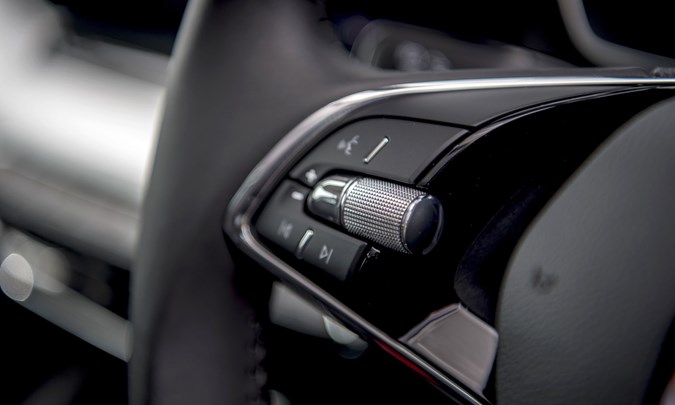
What’s the performance like?
Most of the time, I forget that the Octavia has ‘just’ 116hp on tap. As you’d expect from a diesel, it does its best work at low to mid revs, where it just rolls along happily with the flow. It feels quick off the mark, and up to 60mph you’ll rarely notice the additional power of the more expensive 150hp Octavia.
The only time it feels deficient is when you need to accelerate from a traffic restriction, such as roadworks. You’ll be in sixth gear at, say, 60mph and when you put your foot down to get back up to 70mph, it takes an age to build up speed. The other thing I’m noticing is that while the relaxed gearing is great for cruising, it means it struggles at 30mph in fourth, and labours at anything less than 55mph in sixth gear. Luckily, the gearchange is good – something I wasn’t expecting after the notchy, sticky Volkswagen Golf TDI I drove beforehand.
With a claimed 0-62mph time of 10.4 seconds and a maximum speed of 128mph it looks quick enough on paper, and so it proves in the real world. Compared with the old 1.6TDI unit that Skoda used to fit, this one is much easier to drive requiring far fewer gearchanges, which we can put down to it having more mid-range torque or pulling power due to being a larger engine.
Skoda Octavia at 5,000 miles: what we’re finding out
In conclusion, the Octavia is a great long-distance cruiser. Given we’re talking about a medium-sized family hatchback that you can buy (in lesser spec) for a smidgeon more than £20,000, this is quite a remarkable performance. Although I initially had my doubts that 116hp would be enough to lug around a car of this size, it does just fine in pretty much all situations.
Of course, the 150hp version is just that bit quicker, which should make things even more relaxing if you’re not cracking on, but that does come at a cost. Other positives are that it’s quiet, comfortable and easy to live with, as well as being able to swallow up 500-mile trips in the way that no Focus-class car has any right to. But then again, although it’s priced to compete with the Ford Focuses of this world, the Octavia feels altogether larger and more usable.
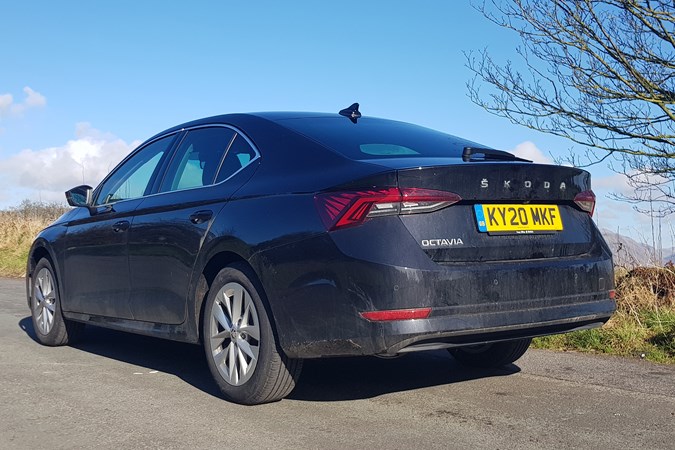
Update 6: comparing with the mild hybrid
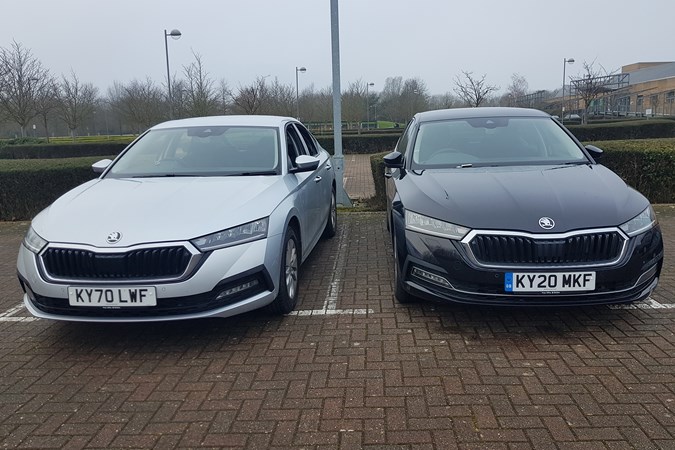
One of the questions this long-term test set out to answer is whether there’s still a place for diesel in a world rapidly filling up with various types of hybrids. Given that the Octavia’s available with two mild hybrid options and one plug-in hybrid, you’re not short of choice, but the one most directly comparable with my 2.0TDI in terms of cost and power is the 1.0TSI e-Tec – and that’s what we’ve lined it up with here.
Diesel vs hybrid: driving
This one goes to the 1.0TSI e-Tec. On paper, there’s not much between the two in terms of performance (see table below), but there’s a huge difference in how it’s delivered. If anything the diesel is marginally quicker, but the hybrid is much more refined – it’s near silent at idle, and even at motorway speeds, it hums along almost inaudibly, Very impressive.
Most of the time you’ll be unaware that the e-Tec is doing the clever hybrid stuff that it does – and unless you’re listening very carefully, it’s almost impossible to tell when it’s switching from battery power to petrol, and vice versa. It doesn’t have the easy mid-range pull of the diesel, but the e-Tec is far from disgraced this department, always pulling cleanly and eagerly from low revs in any gear.
It’s turning over more revs at 70mph (3,000 versus 2,000rpm), but there’s no difference in noise levels, just that the petrol sounds busier. The e-Tec also feels lighter on its feet, with crisper, keener handling that we can only put down to the much lighter engine under the bonnet.
| Engine | Power and torque | 0-62mph time | Top speed |
| 2.0TDI | 116hp, 300Nm | 10.4secs | 128mph |
| 1.0TSI e-Tec | 110hp, 200Nm | 10.6secs | 124mph |
Diesel vs hybrid: fuel economy
An easy win for diesel here – no surprises there. In the week we had the 1.0TSI e-Tec, it averaged 47.1mpg, which compares to the 62.8mpg we’re getting from the 2.0TDI. This is remarkably similar to official WLTP figures – 57.7-67.3mpg for the 2.0TDI versus 44.8-56.5mpg for the 1.0TSI e-Tec. Although this was a much shorter test, the conditions are similar, with much of the driving taking place on fast A-roads and motorways.
Before you tell me that the diesel is disadvantaged by more expensive pump fuel, bear in mind that at the time of writing, the price differential had closed up significantly, with the typical cost of diesel coming in at 127.6p per litre, compared 124.7p per litre for petrol (as of March 2021). So, in terms of actual fuelling costs, the 2.0TDI goes 10.0-11.7 Miles Per Pound (mpp), compared with 7.9-10.0mpp for the 1.0TSI e-Tec.
Diesel vs hybrid: verdict
This is a tough one, and really comes down to how many miles you do and where you drive. If long range and low fuelling costs are paramount to you, then the TDI wins – it’s at least 15mpg more frugal and has a 600-mile+ range. It’s also more relaxed on the motorway, and as diesels go, it is very refined.
So, it’s case closed, yes? Well no. Comparing SE versions of both cars is very interesting because at the time of writing, the 1.0TSI e-TEC cost £21,230 compared with £24,800 for the 2.0TDI. You can buy an awful lot of petrol for the £3,570 price differential between these cars, and if you factor in that the hybrid is the more pleasant car to drive most of the time, and the equation swings decisively in favour of the hybrid.
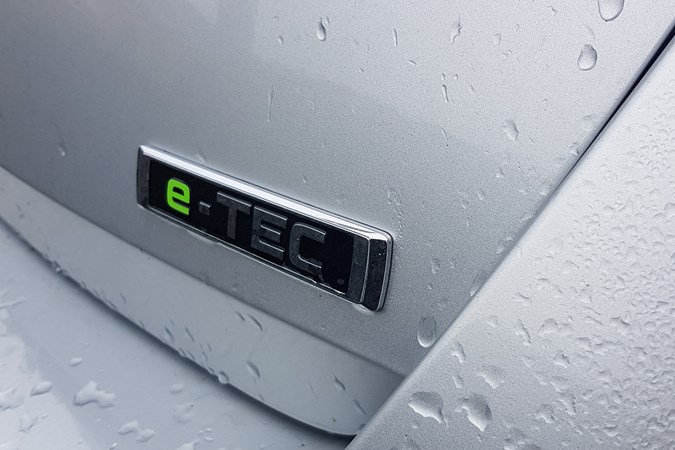
Update 7: Farewell and verdict
Keith signs off from the Skoda Octavia 2.0TDI SE L First Edition after an all-too-short period of driving behind the wheel.
Time’s up with the Skoda Octavia – and although I’ve only had it a couple of months after taking it over from Percy Lawman, I have to say that like every single Skoda I’ve ever owned or spent an extended period of time in (including a rear-engined one in my teenage years), I’ve really grown to like it. Has it been perfect in this time? Yes, pretty much. Would I have another? Yes, watch this space. And would I recommend one to you? Oh, yes. And over a Volkswagen Golf if badge kudos isn’t a big deal to you.
Performance and handling
The main takeaway for me is that this entry-level diesel feels far from entry-level to drive. It may only have 116hp, but it still feels perfectly quick in day-to-day driving, with effortless mid-range acceleration, and a very impressive demeanour on the motorway. Would I prefer the 150hp version? Of course I would, but rarely did I miss those extra horses on those long overnight drives.
This is a car that prioritises comfort over handling, and that shows in the smooth, unflustered drive, no matter how poor the roads are. It’s exceptional on motorways, excellent around town and when you get it on B-roads, you’ll be pleasantly surprised by the tidy and safe handling. My partner complains it ‘flings’ her round bends, which I think is Cumbrian for ‘it has a bit of bodyroll’. It never bothered me, but it might be noteworthy for you.
Fuel economy
I’ve banged on about this enough during the weeks I’ve had this car, and really should just let the table below do the talking. The final scores on the doors are 62.8mpg on a mixture of rural A-roads and motorways, which I think is a very good result for such a well-proportioned family car as this – hybrids still have some way to go to match that performance.
Comfort and practicality
An excellent result, which would only be significantly beaten by an Octavia Estate. The boot was big enough to swallow all my family could throw at it, including my dog, a family Christmas, and a fair bit of furniture. If you don’t need or want the bulk of an estate car, the hatchback is far from second best. Front- and rear-seat space is also excellent – my 6ft 2in son easily fits behind me without complaint.
Despite having the SE L’s larger 17-inch wheels, the ride quality is still very good, too. The seats never gave me a hint of backache, despite some long, long apres-work drives, and noise levels are low, too. A Golf is fractionally quieter, but then, that’s an exceptionally refined car, and you’d expect that to be the case – anything else I’ve driven in this class isn’t close.
Interior and options
Given the dark colour scheme of this car, it was a bit of a joyless car to sit in for first-timers. After the flair of, say a SEAT Leon or Ford Focus, an Octavia is a little po-faced inside. But it’s a cabin that just works, and over time, seems to get more impressive. The muted mood lighting, the suede interior trim and lovely door pulls are little details that delight, one the novelty of the large touchscreen and virtual cockpit wear off.
A lot of the standard equipment in this SE L First Edition will be optional in a standard SE, but how much of it do you actually need? As a rural dweller and high-mileage driver (usually), the LED headlights are a must, but I can take or leave the nice-to-haves like the adaptive cruise control and electric parking brake if it means keeping the price down.
Things I dislike? The low-mounted air vents, the pointless touch-control for the stereo’s volume and, er, that’s about it.
Verdict
If you’re in the market for a family car that’s well-priced, well-equipped, looks-good, and won’t let you down, then an Octavia is most definitely the car for you. In short, it’s a brilliant all-rounder, that’s very difficult to fault. You can read the verdict in the main review to see how much the Parkers team rates this car in comparison to its rivals, and I certainly agree after an extended time in this one. Job done, order yours with confidence.
But, wait. There’s more to this long-term test than evaluating how good the Skoda Octavia is – we needed to answer the question posed at the beginning: does diesel still stack up, and should you buy one over a petrol or petrol-hybrid Octavia?
In this instance, because the Octavia is such an accomplished diesel, it does stack up – as a diesel. But I suspect that the 1.0TSI e-Tec hybrid may well suit more people more of the time – I certainly prefer how the petrol car drives, it’s more refined, and it’s also considerably cheaper to run. If I were doing 40,000+ motorway miles a year (and who will be soon?) I’d take the diesel – otherwise, it’s a nod to the petrol hybrid from me.
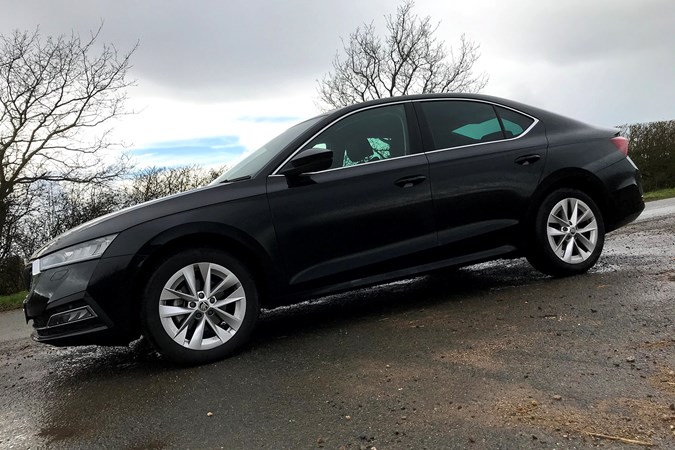
| Skoda Octavia Hatchback 2.0TDI SE L First Edition |
|
| Current mileage | 5,350 |
| Real-world average fuel economy | 62.8mpg average |
| Official combined fuel economy (WLTP figures) | 55.4 – 65.7 mpg |
| Parkers ‘MPP’ (Miles Per Pound) calculation | 10.0-11.7 |
| Car joined Parkers fleet | September 2020 |



